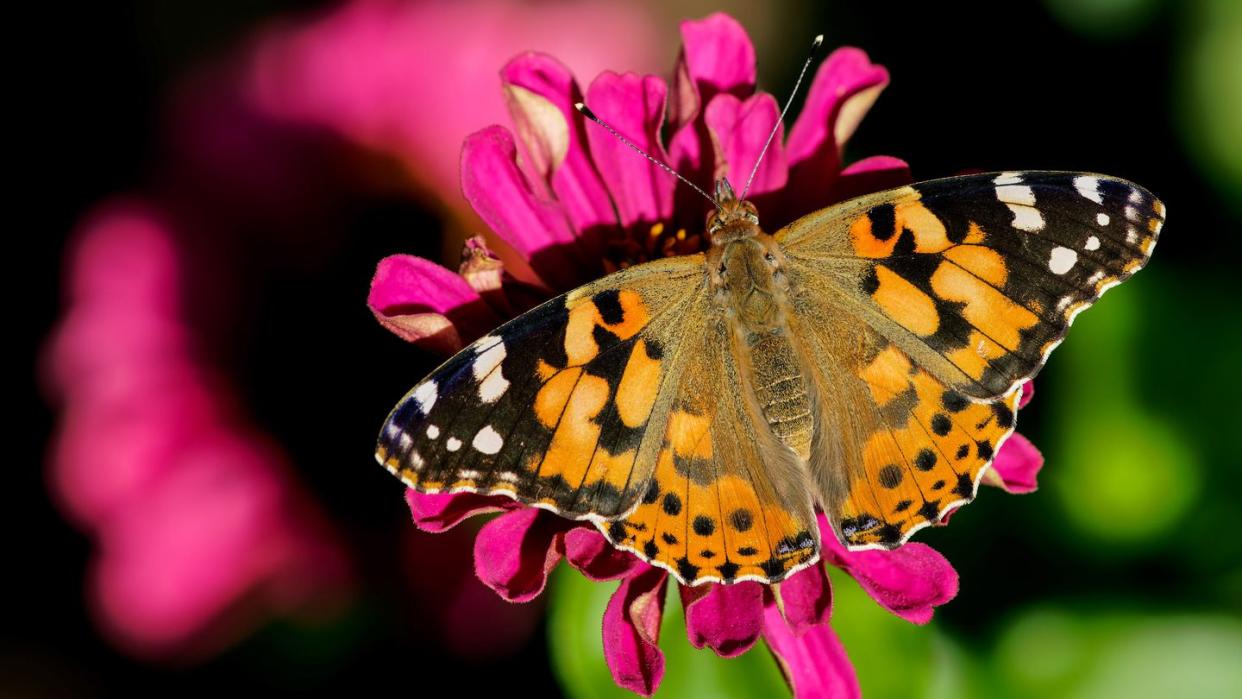A Butterfly Traveled an Unbelievable 2,600 Miles Across the Atlantic, Defying All Odds

"Hearst Magazines and Yahoo may earn commission or revenue on some items through these links."
Some butterflies are known for their long-haul migrations, but few make trips across entire oceans.
Now, an international team of scientists has documented the amazing journey of the Painted Lady Butterfly, which flies some 2,600 miles from West Africa to French Guiana.
The team confirmed this journey by analyzing the DNA of the butterflies, the molecular properties of grains of pollen found on the creatures, and also maps of trade winds that make such a transatlantic journey possible.
Butterflies are no strangers to long-haul flights. The monarch butterfly, for example, is known to travel some 3,000 miles to overwinter in Mexico before traveling back to the U.S. and Canada over the course of generations. Now, an international team of scientists have discovered another incredible butterfly journey by documenting the transatlantic flight of a Painted Lady butterfly (Vanessa cardui) from West Africa to French Guiana.
This story actually begins a decade earlier in October of 2013, when Gerard Talavera—a Spanish researcher from the Botanical Institute of Barcelona—discovered Painted Lady Butterflies along the Atlantic Coast of French Guinana. The species isn’t known to live in South America. The discovery spurred an investigation into how this butterfly, which only stretches a couple inches, could be found so far from its usual home in western Africa. The results of this decades-long inquiry were published this week in the journal Nature Communications.
“We usually see butterflies as symbols of the fragility of beauty, but science shows us that they can perform incredible feats," Roger Vila, a researcher at the Institute of Evolutionary Biology in Barcelona and co-author of the study, said in a press statement. “There is still much to discover about their capabilities.”
First, the team constructed wind trajectories to see if such a journey across the Atlantic was even possible, and favorable trade winds from Africa to South America supported the hypothesis. The new study suggests that the butterfly could complete the journey in 5 to 8 days without stopping, and that isn’t actually too far-fetched, considering this isn’t the only example of these African winds impacting South America. NASA has created 3D maps detailing how dust from the Sahara Desert fertilizes plants all the way in the Amazon—a feat that’s only possible due to these same trade winds.
Further genetic study of the French Guianan butterflies revealed that they’re closely related to African and European butterflies, which eliminated the idea that these specimens were somehow from the Americas. The team also looked for other clues, down to the very molecular level. For instance, they analyzed grains of pollen carried by the butterflies and found that the plants that pollen came from originated in tropical areas of Africa. Additionally, they examined hydrogen and strontium isotopes in the butterfly’s wings, which serve as evidence pointing to where it was born, and found that they likely originated from western Europe.
“It is the first time that this combination of molecular techniques including isotope geolocation and pollen metabarcoding is tested on migratory insects,” University of Ottawa’s Clément Bataille, another co-author of the study, said in a press statement. “The results are very promising and transferable to many other migratory insect species. The technique should fundamentally transform our understanding of insect migration.”
As with most things related to the natural world, climate change could cause alterations or even an increase in these dispersal patterns worldwide, which could disrupt various ecosystems. The researchers call for a comprehensive plan for tracking these dispersal insects to curb risks to other ecosystems.
You Might Also Like

